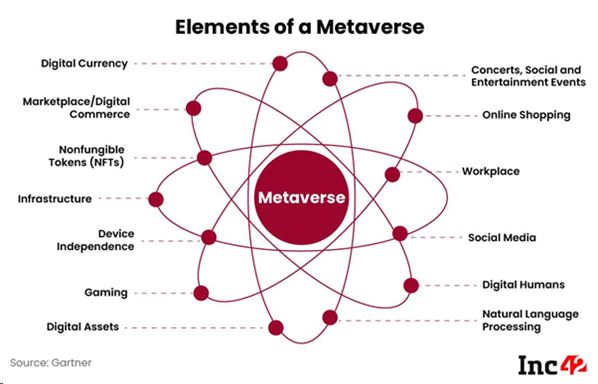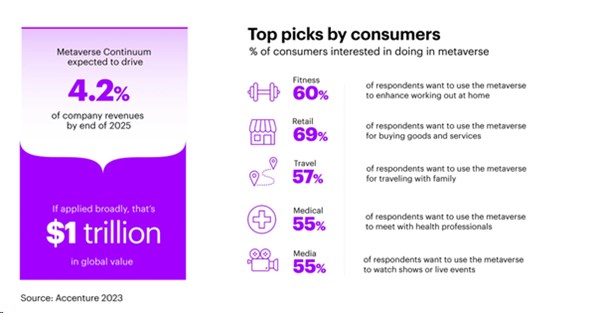
Welcome to the dawn of a new era in customer service, where the metaverse is rapidly transforming how businesses interact with their customers.
With 60% of internet users projected to engage in metaverse environments by 2030, the urgency to adapt customer support strategies has never been more critical.
This digital revolution presents a unique set of challenges, from navigating complex virtual worlds to meeting the heightened expectations of tech-savvy consumers. However, it also offers unparalleled opportunities for innovative, immersive support solutions that can enhance customer satisfaction and loyalty.
In this article, we delve into the evolving landscape of customer service within the metaverse, identifying both the hurdles and the pathways to success in virtual support.
Understanding the Metaverse

The metaverse is like a massive, interactive online playground where people can meet, work, and play using digital avatars. Imagine stepping into a video game where everything feels real—you can attend concerts, visit art galleries, or even try on clothes in a virtual store.
This leap from simple web pages to these vivid, 3D worlds is powered by some pretty cool tech. Virtual Reality (VR) goggles can transport you to these spaces, making you feel like you’re really there. Augmented Reality (AR) blends digital objects with the real world, so you could see a digital sculpture in your living room.
Artificial Intelligence (AI) makes the experience smarter, with digital beings that can talk and interact with you. And thanks to blockchain, you can buy and sell things safely in this virtual universe. Companies like Facebook’s Meta are investing big time in this, betting that the metaverse is the next big thing after the internet.
The Role of Customer Service in the Metaverse
In the metaverse, customer service isn’t just about answering calls or replying to emails. It’s a whole new ballgame. Here, businesses can set up virtual help desks or even entire support centers where avatars (digital versions of us) can walk in to ask for help, just like in a real store.
This setup is a game-changer because it adds a personal touch that’s often missing online. For example, a fashion brand might have a virtual store where you can try on clothes with your avatar. If you have questions, a customer service avatar can show you different styles or explain how to make a purchase.
Companies like Verizon have experimented with virtual reality to help customers troubleshoot issues in a 3D space, making complex tech support more intuitive. This approach makes solving problems faster and more fun, turning customer service into an experience rather than a chore.
Technologies Shaping Customer Service in the Metaverse

The tech-powering customer service in the metaverse is straight out of a sci-fi movie. Virtual reality (VR) lets customers step into a 3D world to solve problems or learn about products in a way that feels real. For example, if you’re trying to fix your internet router, a VR simulation could guide you through the steps in a hands-on way.
Then, there are AI-driven avatars and chatbots, ready to help anytime, day or night. These aren’t your average chatbots; they can understand complex questions and give personalized advice, almost like talking to a human.
Blockchain technology keeps your purchases safe and sound, ensuring that the transaction is secure and transparent when you buy something in the metaverse. And let’s not forget augmented reality (AR), which can overlay digital images onto the real world, so you can see how a new sofa looks in your living room before you buy it. Together, these technologies are the pillars of customer service in the metaverse.
Why Metaverse Customer Service Is The Future

Currently, traditional customer service is equipped with some pretty cool tools. Take Zendesk, a powerhouse in helping businesses manage customer questions, requests, and feedback. Moreover, there are many other Zendesk alternatives that are streamlined, efficient, and let customer service teams provide help quickly and effectively – all in one place.
However, the emergence of the metaverse introduces a new dimension to customer service. Zendesk, among others, has already begun incorporating metaverse-based customer support. This reflects a broader industry trend where many sectors are eager to engage in the metaverse, highlighting a significant opportunity for customer service within this space. As we transition into the metaverse, customer support will become more immersive and interactive, allowing businesses to establish 3D spaces for real-time interactions with customers as if face-to-face.
The metaverse also makes it possible for the service to be more proactive. With AI, companies can predict issues you might run into and offer solutions before you even encounter a problem. Plus, the support experience can be much more engaging and fun with VR and AR. Imagine troubleshooting your tech issues with a game-like experience in VR, turning a typically mundane task into something you might actually look forward to.
Challenges of Implementing Customer Service in the Metaverse
Implementing customer service in the metaverse isn’t as straightforward as it sounds for companies. First off, there’s the technical side of things. Setting up a virtual world that’s both functional and user-friendly takes a ton of tech savvy and resources. Imagine a company like Zara wanting to offer virtual shopping experiences. They’d need to create digital twins of thousands of clothing items, not to mention a virtual store that can handle hundreds of shoppers at once.
Security is another big hurdle. When transactions happen in the metaverse, companies need to ensure that customer data is safe from cyber threats, which requires cutting-edge security measures.Then, there’s training staff to operate in these virtual environments. Your customer service team needs to be as comfortable navigating a 3D world as they are answering a phone call. Plus, they need to know how to handle new types of customer interactions that don’t even exist yet in traditional retail settings.
For example, a significant challenge is ensuring that each virtual visitor receives prompt and personalized support, akin to the high standards expected in the physical world. This is where a visitor management system comes into play. These systems can be instrumental in orchestrating and enhancing customer experiences in the Metaverse. By seamlessly tracking visitor data and preferences, it ensures that virtual support teams can deliver tailored assistance, much like a concierge service for the digital realm.
All these challenges mean that while the metaverse offers exciting new possibilities for customer service, getting there is going to require some serious innovation and investment from businesses.
Companies Leveraging the Metaverse Tech for Customer Service
Companies are diving headfirst into the metaverse to revolutionize customer service, making interactions more immersive and engaging.
#1 Meta
Meta, formerly known as Facebook, is leading the charge by creating virtual spaces where businesses can interact with customers in real-time. Imagine walking into a digital store, designed by Meta, where you can chat with avatars of customer service reps to get product recommendations or troubleshoot issues. This approach not only makes customer service more interactive but also adds a personal touch that’s often missing in online shopping.
#2 Google

Google is transforming customer service by integrating metaverse elements into its services like Live View. Live View uses augmented reality to enhance real-world experiences, guiding you to stores or helping you navigate inside large buildings.
For example, a business can use Google My Business listing to highlight products and services, schedule their posts that appear in Google Search and Maps and more. Then, with the Live View feature, a person can easily find your location if they only lift their phone and search the area. This AR feature can dramatically improve how businesses provide in-person support, making it easier for customers to find products or get help in real-world settings.
#3 Nike
Nike is sprinting ahead in the metaverse race by creating virtual worlds and products for its digital-savvy audience. They’ve launched Nikeland, a virtual space within Roblox, where users can try on and buy digital sneakers and apparel for their avatars.
This not only serves as a unique marketing tool but also offers a new avenue for customer service, where Nike can directly engage with customers, gather feedback, and offer support in an environment that feels both fun and futuristic.
#4 Ikea
Ikea is leveraging AR technology to redefine customer service in the home decor space. Their app allows customers to visualize furniture in their homes before making a purchase, solving the age-old problem of “Will this look good in my room?”
Beyond just visualization, Ikea’s foray into the metaverse could extend to offering virtual design consultations, where representatives can assist in planning your space within a virtual version of your home. This approach makes shopping more convenient and ensures that customers make more informed decisions, enhancing satisfaction and reducing returns.
Embracing Tomorrow’s Support Today
As we stand on the brink of a new frontier in customer engagement, the metaverse heralds a transformation in customer service that is both profound and exhilarating. The leap into virtual worlds not only challenges businesses to reimagine support but also offers them a canvas to craft experiences that are more personal, interactive, and immersive than ever before.
The key to thriving in this evolving landscape lies in embracing the technological marvels of VR, AR, AI, and blockchain, to deliver solutions that are not just about resolving issues but enhancing the overall customer journey. By doing so, companies can not only meet but exceed the expectations of a digitally native generation, ensuring loyalty and fostering a sense of community.
The future of customer service in the metaverse is about creating meaningful, memorable interactions that resonate with customers on a personal level, making every virtual encounter an opportunity to build lasting relationships.
About the Author
 Scarlett Finley is a business-savvy affiliate marketing specialist with a wealth of experience in high-growth software companies. She excels at consulting businesses on how to leverage SAAS tools to achieve their growth objectives. In her spare time, she loves exploring the Scottish Highlands and training for her next tough-mudder challenge.
Scarlett Finley is a business-savvy affiliate marketing specialist with a wealth of experience in high-growth software companies. She excels at consulting businesses on how to leverage SAAS tools to achieve their growth objectives. In her spare time, she loves exploring the Scottish Highlands and training for her next tough-mudder challenge.




